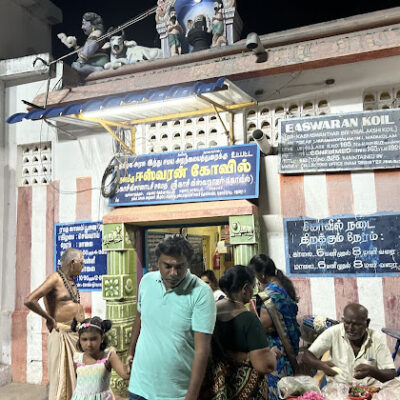Kozhikode Loganarkavu Durga Devi Temple- , Kerala

Address
Kozhikode Loganarkavu Durga Devi Temple- Kavil Rd, Villiappally, Vatakara, Kerala 673104
Deity
Amman: Durga Devi
Introduction
- Name: Lokanarkavu Temple (short for Lokamalayarkavu).
- Location: Memunda, 4 km from Vatakara, Kozhikode District, Kerala, India.
- Etymology: The name means “lokam” (world) made of “mala” (mountain), “aaru” (river), and “kavu” (grove).
- Deities:
- Main Deity: Durga Devi.
- Sub-Shrines: Dedicated to Lord Siva and Lord Vishnu.
- Historical Background: The temple is 1500 years old, built by Aryan Brahmins who migrated to Kerala. It is the family temple of 500 Aryan Nagariks.
- Accessibility: The nearest railway station is Vadakara, 5 km away, and the nearest airport is Calicut Airport, 87 km away.
Puranic Significance
- Goddess Durga: The main deity is Goddess Durga, and the temple’s two adjacent shrines are dedicated to Lord Vishnu and Lord Siva. The Thacholikali dance, performed during festivals, is a significant cultural tradition resembling the martial art Kalarippayattu.
- Legend of the Aryans: The temple was built by Aryan Brahmins who accepted the traditions of the local Nairs. The goddess is believed to have traveled with the Aryans to Lokanarkavu in the form of a lady. These Brahmin settlers worshipped her as their mother rather than just a deity.
- Historical Context: Thacholi Othenan, a great devotee of Goddess Durga, was not involved in the establishment of the temple, although his association with the temple is strong. The local rulers and Kerala kings, who practiced Shakteya pooja (with animal or human sacrifice), later modified their traditions, eliminating such practices in Lokanarkavu.
- Cultural Shift: The Aryan settlers initially resisted integration with the local community, refusing to pay taxes to the local kings. However, over time, they adapted to local customs while maintaining their distinct beliefs.
Special Features
- Thacholi Othenan: A legendary hero from North Kerala, Thacholi Othenan (real name Udayana Kurup) was a famous Kalarippayattu warrior who lived in the 16th century. He is revered for his skill and heroism. Kalaripayattu artists still seek the blessings of the deity of Lokanarkavu before their debut.
- Thacholikali Dance: This folk dance is unique to Lokanarkavu and is performed during festivals. It is closely related to the martial art Kalarippayattu, honoring the temple’s connection with Thacholi Othenan.
Festivals
- Lokanarkavu Utsavam (Mandalavilakku Festival):
- Duration: 41 days, held during the Malayalam month of Vrischikam (mid-November to mid-December).
- Features: Thacholikali dance performance, which resembles Kalarippayattu.
- Attraction: Devotees come together to light lamps, creating a beautiful sight.
- Meenam Festival:
- Duration: 8 days, with Kodiyettam (flag hoisting) on Rohini day.
- Highlights: The Theyyambadi Kurup dance on the fifth and sixth days, Nadu Valam Vekka and Pallivetta (holy hunt) on the seventh day.
- Pooram Day: Includes Poorappattu (songs from the life of the goddess) and Poorakkali (a traditional male dance ritual). The festival concludes with the Arattu (holy bath) of the goddess.
Century/Period/Age
1500 Years old
Managed By
Travancore Devaswom Board.
Nearest Bus Station
Memunda
Nearest Railway Station
Vatakara Station
Nearest Airport
Kannur









